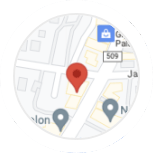BLOG
Slip and Fall Prevention & Legal Guide
Slip and fall accidents are more than just unfortunate events; they can lead to serious injuries and complex legal battles. Understanding the elements involved in such incidents is crucial for both victims and property owners. This article delves into the basics of slip and fall accidents, the science behind them, prevention strategies, legal frameworks, and the role of insurance.
The Basics of Slip & Fall Accidents
Defining Slip & Fall Accidents
A slip and fall accident occurs when an individual loses their balance due to a hazardous condition, ultimately falling to the ground and sustaining injuries. These accidents can occur in a variety of settings, including homes, workplaces, and public areas. The legal implications of a slip and fall incident often revolve around the concept of negligence.
Negligence refers to a failure to exercise the level of care that a reasonably prudent person would in similar circumstances. For a slip and fall case to hold, the injured party typically must prove that the property owner or manager was aware of the hazardous condition or should have been aware of it. This can involve gathering evidence such as maintenance records, witness statements, and photographs of the scene. In many cases, the timeline of the hazardous condition’s existence plays a crucial role in establishing liability, as it can demonstrate whether the property owner had sufficient time to address the issue before the accident occurred.
Common Causes of Slip & Fall Accidents
Slip and fall accidents can stem from numerous causes, some of which are more prevalent than others. Common causes include:
- Wet or slippery surfaces, often due to spilled liquids or weather-related conditions.
- Poor lighting in walkways, making it difficult to see potential hazards.
- Uneven surfaces or floor mats that can create trip hazards.
- Obstructed walkways, where items or furniture block the path, leading to accidents.
Understanding these causes can help in both prevention and legal accountability regarding slip and fall incidents. For instance, property owners can implement regular inspections and maintenance schedules to identify and rectify potential hazards before they lead to accidents. Additionally, educating employees and visitors about the importance of reporting unsafe conditions can foster a culture of safety. Furthermore, the use of non-slip mats in high-traffic areas and ensuring adequate lighting can significantly reduce the likelihood of such accidents occurring. Awareness and proactive measures are key components in mitigating the risks associated with slip and fall incidents.
The Science Behind Slip & Fall Accidents
The Role of Friction in Slip & Fall Accidents
Friction plays a crucial role in maintaining stability while walking. When the friction between our footwear and the surface we walk on is insufficient, it can lead to slipping. This lack of adequate friction can result from various factors, such as surface materials, wear and tear, or the presence of contaminants like oil or moisture.
In forensic analysis of slip and fall cases, experts often evaluate the coefficient of friction of the surface where the accident occurred. If it’s found to be below acceptable standards, it can significantly influence the outcome of a legal case. For instance, surfaces made from polished stone or certain types of tile can have lower friction coefficients, especially when wet, compared to textured surfaces like rubber or certain types of concrete. Understanding these nuances is essential for both victims seeking justice and property owners aiming to prevent accidents.
Impact of Environmental Factors
Environmental factors can exacerbate slip and fall risks, particularly dynamic conditions such as rain, snow, or ice. Weather elements can contribute to surface slipperiness and are a significant concern during winter months. Property owners have a duty to ensure that their premises are safe, which includes regular maintenance like snow removal and salting walkways.
Moreover, seasonal variations can present unique hazards, as conditions change. For example, during the fall, leaves can accumulate on walkways, creating a slick surface that can be just as dangerous as ice. Similarly, in the spring, melting snow can lead to pooling water, which can obscure hazards beneath the surface. Staying vigilant and proactive can mitigate these risks effectively. Additionally, the use of appropriate signage to warn pedestrians of slippery conditions can be a simple yet effective measure to enhance safety and reduce liability for property owners.
Preventing Slip & Fall Accidents
Safety Measures at Home
Homeowners can take several precautions to minimize the risk of slip and fall accidents within their premises. Implementing effective safety measures is crucial not only for the well-being of occupants but also to protect themselves from potential legal claims. Some key steps include:
- Maintaining clear pathways by removing clutter and ensuring that furniture is properly positioned.
- Installing non-slip mats in areas prone to moisture, such as bathrooms and kitchens.
- Ensuring adequate lighting, particularly in stairwells and hallways.
- Regularly inspecting and addressing uneven surfaces , such as cracked sidewalks or flooring.
By being proactive, homeowners can significantly reduce the risk of accidents. Additionally, it is wise to consider the installation of handrails in staircases, which can provide extra support for individuals, particularly the elderly or those with mobility issues. Furthermore, using bright, contrasting colors for steps can enhance visibility, making it easier for everyone to navigate safely. Regularly reviewing and updating safety measures as seasons change can also be beneficial; for instance, ensuring that outdoor walkways are clear of snow and ice during winter months is essential for preventing slips.
Safety Measures in Public Spaces
In public spaces, safety measures are critical for managing foot traffic and minimizing slip and fall accidents. Property owners and managers should implement comprehensive safety protocols, including:
- Regular maintenance checks to identify and address any hazardous conditions.
- Effective signage that alerts individuals to potential slip hazards, especially during wet conditions.
- Rapid cleanup of spills and thorough inspections during periods of inclement weather.
- Staff training focused on safety awareness and accident prevention strategies.
Recognizing the importance of safety in public areas can foster a culture of care that protects both patrons and property owners. Moreover, the implementation of slip-resistant flooring materials in high-traffic areas can greatly reduce the likelihood of accidents. Facilities can also benefit from establishing a clear protocol for reporting hazards, ensuring that any issues are addressed promptly. Engaging the community in safety initiatives, such as awareness campaigns or workshops, can further enhance the collective responsibility towards maintaining a safe environment. Ultimately, a proactive approach to safety not only safeguards individuals but also enhances the reputation of the establishment as a whole.
Legal Aspects of Slip & Fall Accidents
Understanding Liability in Slip & Fall Accidents
Liability in slip and fall accidents is a pivotal aspect that determines whether a victim can successfully claim damages. In legal terms, the property owner holds a duty of care towards visitors, which varies depending on the visitor’s status—invitee, licensee, or trespasser. Understanding this classification is essential in assessing liability. For instance, invitees, such as customers in a store, are owed the highest duty of care, while trespassers may have limited protections under the law. This distinction can significantly impact the outcome of a case, as property owners may be more accountable for injuries sustained by invitees than by those who entered without permission.
If a property owner fails to maintain a safe environment or address known hazards, they can be held liable for the resulting injuries. The injured party must demonstrate that negligence on the owner’s part was a direct cause of the accident. This often involves proving that the owner was aware of the dangerous condition or that it existed for a sufficient length of time that they should have discovered and remedied it. Additionally, factors such as weather conditions, the type of flooring, and the presence of warning signs can all play a role in determining liability. Understanding these nuances can empower victims to build a stronger case.
Navigating the Legal Process After a Slip & Fall Accident
If you are involved in a slip and fall accident, knowing how to navigate the legal process is crucial for seeking compensation. Firstly, it is advisable to gather evidence at the scene, including photographs of the hazard, witness statements, and medical documentation of injuries. This evidence can be critical in establishing the circumstances surrounding the accident and the extent of your injuries. Additionally, documenting the scene as soon as possible can help preserve important details that might otherwise be overlooked or altered over time.
Consulting with a lawyer who specializes in personal injury law can provide invaluable guidance. They can help you navigate the intricacies of filing a claim, adhering to deadlines, and negotiating with insurance companies. Understanding your rights and the legal implications is vital for the successful pursuit of damages. Furthermore, a skilled attorney can assist in evaluating the full extent of your damages, which may include not only medical expenses but also lost wages, pain and suffering, and future rehabilitation costs. This comprehensive approach ensures that you are adequately compensated for all aspects of your recovery, making it essential to have expert legal support by your side during this challenging time.
The Role of Insurance in Slip & Fall Accidents
How Insurance Covers Slip & Fall Accidents
Insurance plays a significant role in addressing the financial ramifications of slip and fall accidents. Generally, premises liability insurance protects property owners against claims resulting from such incidents. This insurance can cover medical expenses, legal fees, and settlements if the claim prevails.
For individuals injured in a slip and fall, understanding the insurance policies involved is essential. Homeowner’s insurance or commercial liability insurance may provide coverage for medical bills and other damages resulting from accidents on the property. Additionally, many insurance policies may also include provisions for rehabilitation costs, which can be crucial for those facing long-term recovery from their injuries. This aspect of coverage can help alleviate some of the financial burdens that often accompany such accidents, allowing victims to focus on their recovery rather than their mounting bills.
Dealing with Insurance Companies After a Slip & Fall Accident
Negotiating with insurance companies after a slip and fall accident can be a challenging process. Insurance adjusters are often trained to minimize payouts, which can lead to less-than-fair settlements for victims. It is crucial to approach this process with a clear understanding of your rights and the associated legal principles. Furthermore, being aware of the specific terms and conditions of the insurance policy in question can empower victims during negotiations, enabling them to advocate more effectively for their claims.
Keeping meticulous records of medical expenses, lost wages, and other losses is essential when dealing with insurance providers. This documentation not only supports your claim but also serves as a tangible representation of the impact the accident has had on your life. If settlement negotiations are unsuccessful, pursuing further legal action may be necessary to ensure accountability and fair compensation. A knowledgeable attorney can be indispensable in maximizing your outcome during this process. They can help navigate the complexities of insurance law, ensuring that all relevant evidence is presented and that your case is positioned for the best possible resolution.
In addition to legal representation, it may also be beneficial to seek support from local advocacy groups that specialize in slip and fall incidents. These organizations can offer resources, guidance, and even connections to medical professionals who understand the nuances of slip and fall injuries. Such support can be invaluable in helping victims regain their footing after an accident, both physically and financially. Awareness and preparedness can significantly enhance safety and legal rights when facing such incidents.










